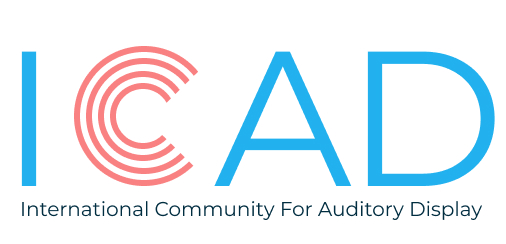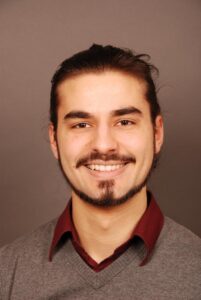Winner of the ICAD 2018 Hyundai Motors Best Paper Award
So, who are you?
I am a musicologist with a focus on auditory perception. Psychoacousticians have revealed such a deep understanding of the relationship between the physics and the perception of sound. I love to apply this knowledge. Not only in the evaluation of existing audio technologies, like speech intelligibility of audio codecs or auditory quality of binaural systems, but rather in the development of new audio technologies, like psychoacoustic sound field synthesis, music analysis tools and psychoacoustic sonification designs. And vice versa: I aim at gaining a deeper understanding of sound perception and cognition in an interactive context with dynamic sound that only sonification can offer.
How did you end up working on Sonification and Auditory Displays?
There was a research project at the University of Bremen where researchers and surgeons tried to find ways to reduce the cognitive demands of clinicians in image-guided surgery. Besides many approaches that involved computer graphics and artificial intelligence, they had the idea presenting spatial information by means of sonification to relieve the visual cortex. This is where I stepped in: My work in the field of sonification contains almost everything I love about musicology: audio programming, digital signal processing, psychoacoustics and auditory cognition, empirical research, interaction with sound, room acoustics and soundscapes. Unfortunately, my sonification research right now has nothing to do with music… I hope I will eventually find the time for that, too.
What is the role of Sonification/Auditory Display in your research?
Sonification has fascinated me so much that it became the focus point of my research. I also work on spatial audio, music information retrieval and I am involved in a research collaboration where we try to recognize the presence, species and sex of mosquitoes by acoustical means. However, I am in the unpleasant, but typical, postdoc-situation: I have a three-year funding for a very specific topic, so I cannot live out all my sonification dreams.
What is the most challenging part in your work?
Sonification is trapped in a vicious circle. Many people are uneducated and inexperienced concerning sound. They don’t know, and often don’t even believe, how much information could be communicated using sound. Consequently, they are not eager to spend much time learning to interpret sonification.
I think we have two options: Either we demonstrate how a single person can achieve the impossible by using sonification. I’m thinking of letting a blind surgeon ablate a tumor.
Or we take the enduring path and try to establish sonic education in schools. If students could analyze and describe auditory streams as naturally as visual objects, they would certainly use sonification without any inhibitions or skepticism. Given my precarious employment situation, I can hardly contribute to either of these approaches.
Anything special ICADders should know about you?
I am super happy and super proud that I will organize the ISon 2022 together with Thomas Hermann and Roberto Bresin. The workshop will be funded by the Hanse-Wissenschaftskolleg and hosted in Delmenhorst near Bremen, Germany. Everybody with an interest in interactive sonification and/or pychoacoustics is welcome!
What would you like to say to ICADders?
I hope that together we can break out of the vicious circle. Let’s spread the word. Let’s convince the industry to implement sonification in everything that comes to mind. Let’s create an Open Office Extension to sonify data, create a dashboard sonification tool, design auditory emojis… Let’s convince the educational policy that inclusive schools need multi-modal learning, too. We’ve got a rough road ahead, but ICADders know that sonification can make the world better.
What is your favorite sonification/auditory display ever?
I desperately need Bruce Walker’s “Soccer Sonification” in the pub. I like Thomas Hermann’s “Wave Space Sonification”; a framework to analyze a phase space using your own sonification. I also like the water bottle from The Sonification Handbook; an exceptionally informative auditory icon.
What is the study/tool/work in the field of auditory display you are most proud of?
My “psychoacoustic sonification” is a one-sound-fits-all approach. We use it as a guidance tool in surgical and other tasks, a patient data monitoring tool, an auditory graph and a computer game, and we use it to carry out psychometric experiments: https://www.youtube.com/watch?v=kKz5KQ8ts4A&list=PLVv3BMS8IIXEY8xO4rCTqteymTs10sV1i&index=1 So far, we have published and evaluated a version for three-dimensional data. But we have already implemented a second psychoacoustic sonifcation that is perfectly orthogonal to the first one. So we could sonify the three-dimensional location of a target and the nearest obstacle in a sonification for navigation. Or we could sonify patient data of six vital functions for the intensive care unit.
Any way to learn more about your work or reach out to you?
You can learn, see and hear more about my sonification research on my project website
https://bscc.spatial-cognition.de/node/70/
Play the sonification game to support our research:
http://curat.informatik.uni-bremen.de/en/download.html
Use and recommend our acoustic torpedo level app:
https://sonification.uni-bremen.de/downloads.html
Write me an e-mail: ziemer@uni-bremen.de


